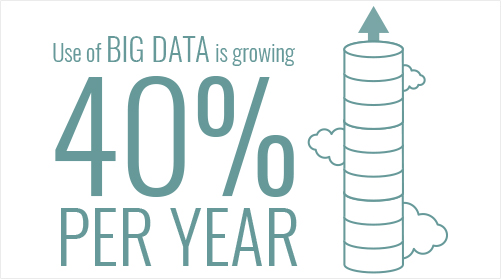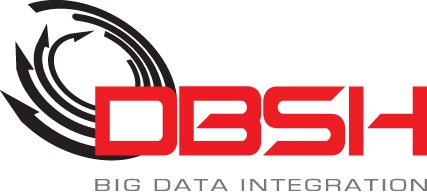Big Data > Revolution
Big Data Revolution
By Michael Elkin, DBS-H Co-Founder
Big data is everywhere: email, online chat, social media, sensors, photos, and video footage. The amount of data being generated is growing at an estimated 40 percent per year. According to the McKinsey Global Institute, data volume will grow 44-fold between 2009 and 2020. The revolution in big data is not the massive quantity of data available, but the ability to leverage data across organizations and industries.
Like traditional data, big data must be captured, stored, organized, and analyzed, and the results of the analysis need to be integrated into operational processes. But since big data is derived from relatively new types of data sources that previously weren’t mined for insight, companies aren’t used to collecting information from these sources, nor are they experienced in dealing with large volumes of unstructured data. As a result, much of the information available to companies isn’t captured or stored for long-term analysis, and opportunities for gaining insight are lost.
Managing these vast quantities of data is only part of the challenge facing enterprises today. Companies that wish to assimilate big data must know how to integrate these new types of information with traditional corporate data, and tailor their insights to existing business processes and operations.
When enterprises succeed in leveraging collective, unstructured big data together with traditional data sources to gain deeper insight into their customers, partners, and business, they are benefiting from a 360° customer view.
To obtain a 360° customer view, enterprises use insights from big data to enhance the traditional types of information that are collected and analyzed. For example, a company operating a retail website can leverage big data to understand visitors’ activities, such as pages viewed, search history, and questions asked online. This knowledge can be combined with purchasing history and stored in a corporate relational database to help make marketing forecasts.


For enterprises to best leverage big data, they need to successfully combine big data tools with traditional data management systems. Companies that don’t start the process of integrating big data with traditional databases risk lagging behind.
DBS-H addresses the challenge of assimilating big data by enabling integration between traditional and non-traditional databases. This innovative approach enhances the agility and accessibility of big data. Not only does this integrational approach offer a more complete understanding of the business, it also builds upon existing IT architectures instead of replacing them. It should be emphasized that big data systems are not replacing classic SQL databases, which continue to serve important organizational needs, such as managing customer data and financial transactions.
A driving force revolutionizing big data is the organizational merge of Marketing and IT departments, where agility and time-to-market are critical factors. If in the past, the Chief Information Officer was responsible for SQL systems and everything related to organizational data, today the Chief Marketing Officer is expected to manage various data lakes.
The success of the big data revolution depends on how easily information can be accessed by key players in organizations, such as managers, marketing and operations personnel, analysts, and developers. DBS-H solutions release data bottlenecks by transparently integrating big data with existing data sources, making sure that everyone – not just the IT department – has access to the data they need.
The key to successfully assimilating big data in a traditional database environment is continuous data integration between existing SQL relational databases and new NoSQL database engines.
Let’s get started
